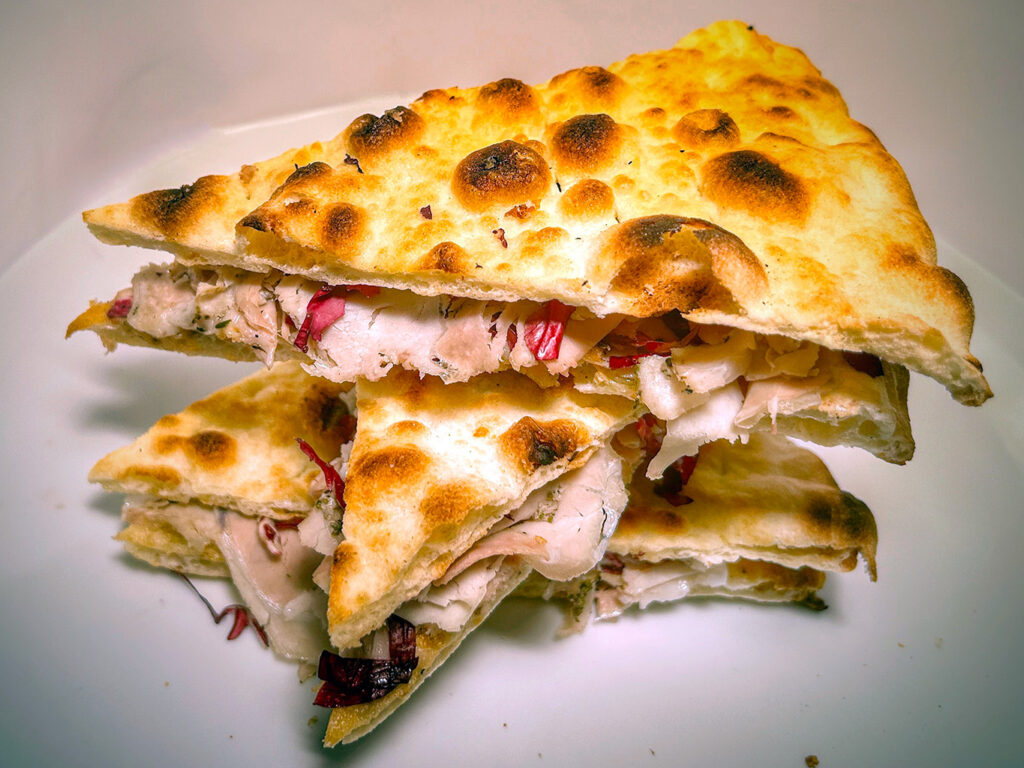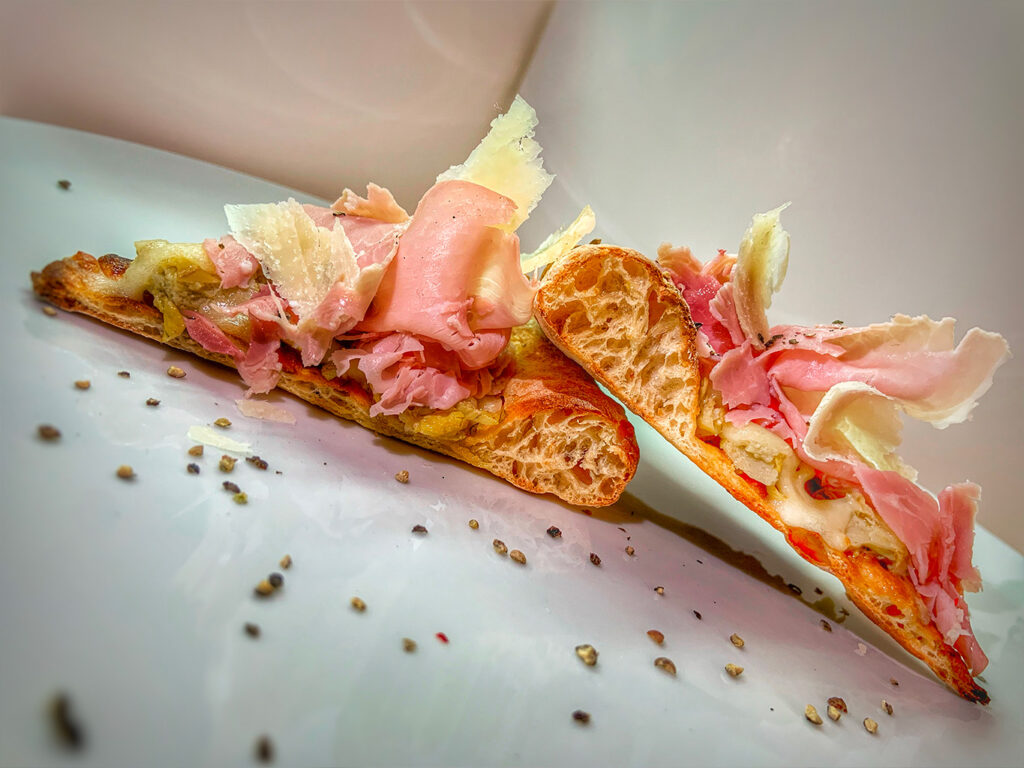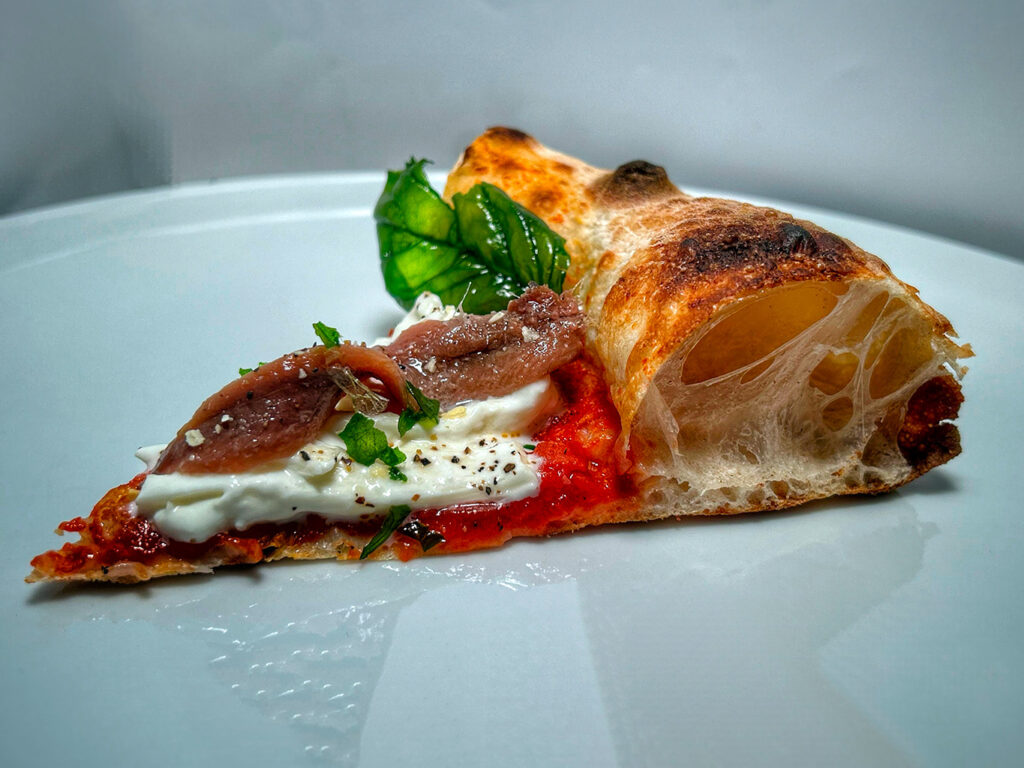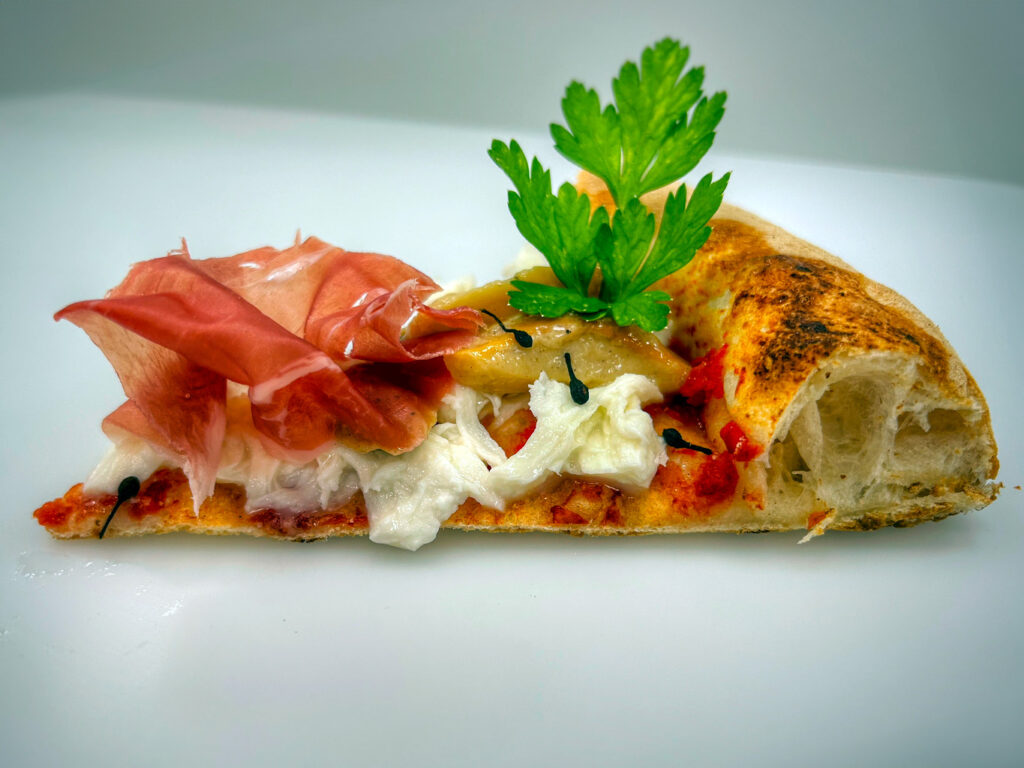Piemontese Onomatopea
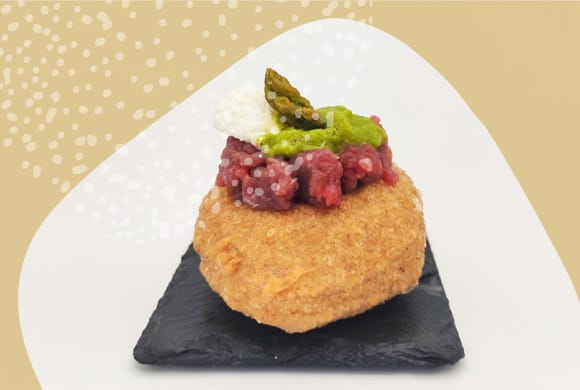
Ingredients
Biga dough:
Mora flour
Water
Fresh yeast
Refreshment:
Semina flour
Water
Extra Virgin Olive Oil
Sea Salt
Toppings:
Knife-chopped Fassona
Asparagus
Castelmagno cheese
High-quality cream
Olive oil, to taste
Garlic, to taste
Salt to taste
Pepper to taste
For Frying
Olive oil or peanut oil
Share on:
Introduction
Over the past year, we have often heard that nature has tried to reclaim its space. But in Italy, and especially in its villages, nature has always had its place, coexisting alongside humanity while preserving its authenticity. From North to South, the beauty of our land offers moments to reconnect with tradition and the essence of local products.
Among the guardians of this heritage are artisans: millers who preserve the most noble and nutritious fractions of the grain through integrated milling techniques, and visionary butchers who, breaking with tradition, present Fassona Piemontese raw meat, prepared simply with a sharp knife.
Asparagus, a symbol of seasonality and health benefits, enriches this recipe with its antioxidant and anti-inflammatory properties. “Onomatopea Piemontese” highlights the sweetness of Mora flour and combines Castelmagno cream and asparagus with the delicate knife-chopped Fassona. From the very first bite, this montanarina evokes the sounds of tradition and the authenticity of our land.
Proceedings
Dough Preparation:
Place 300 g of Mora flour in a mixer or stand mixer. Dissolve 3 g of fresh yeast in 180 ml of water. Start the mixer at medium speed, adding 80% of the water initially, then the rest after 1 minute. Knead for 3 to 4 minutes. Remove the dough, place it in a pre-oiled container, and allow it to rest as a biga for 16 to 18 hours at 18°C.
After resting, transfer the biga to the mixer with 200 g of Semina Blu flour. Gradually add the remaining water (reserving 10%). After 6 minutes, incorporate the oil and knead until fully absorbed (about 3 minutes). Finally, add the salt and increase the speed. Slowly add the remaining water, monitoring the dough’s consistency.
Let the dough rest for 20 minutes under a damp cloth. Divide it into 45 g portions and place them in a container until they double in size.
Topping Preparation:
Knife-Chopped Fassona:
Finely chop the Fassona meat with a sharp knife. Season with olive oil, salt, and pepper, ensuring the oil is evenly distributed without excess. Cover with plastic wrap and store in the refrigerator, away from light.
Castelmagno Cream:
Grate the Castelmagno cheese and place it in a tall, narrow container. Add a portion of high-quality cream. Use an immersion blender to mix, gradually adding the remaining cream until the desired consistency is achieved.
Asparagus Cream:
Wash the asparagus thoroughly, blanch in boiling water, then cool in ice water. Set aside the tips for decoration, sautéing them briefly with garlic, oil, and salt. Blend the stalks into a smooth cream with olive oil and salt.
Frying the Montanarina:
Heat the oil to 180°C. Remove a dough portion and place it in the hot oil. Use a skimmer to flip the dough after a few seconds, continuously spooning oil over it until it puffs up and achieves a golden, even color. Drain on absorbent paper.
- Place 15–20 g of knife-chopped Fassona on the montanarina.
- Add a dollop of Castelmagno cream and, at its base, a layer of asparagus cream.
- Decorate with a sautéed asparagus tip, offering both a visual element and a second texture.
Pizza chef's tips
Tips from the Pizzaiolo
Monitor the dough during fermentation, as ambient temperature can affect the rising time.
Add cream to the Castelmagno gradually, as the required amount may vary based on the cream’s characteristics.
Use a thermometer to maintain the correct oil temperature during frying. If unavailable, drop a small piece of dough into the oil; if it floats back up within seconds, the oil is ready for frying
